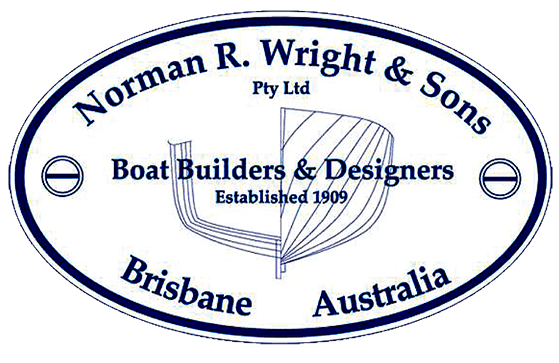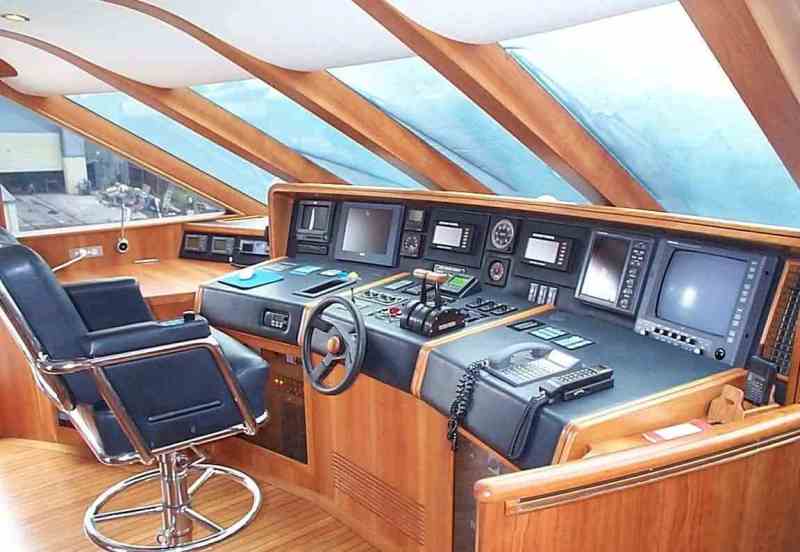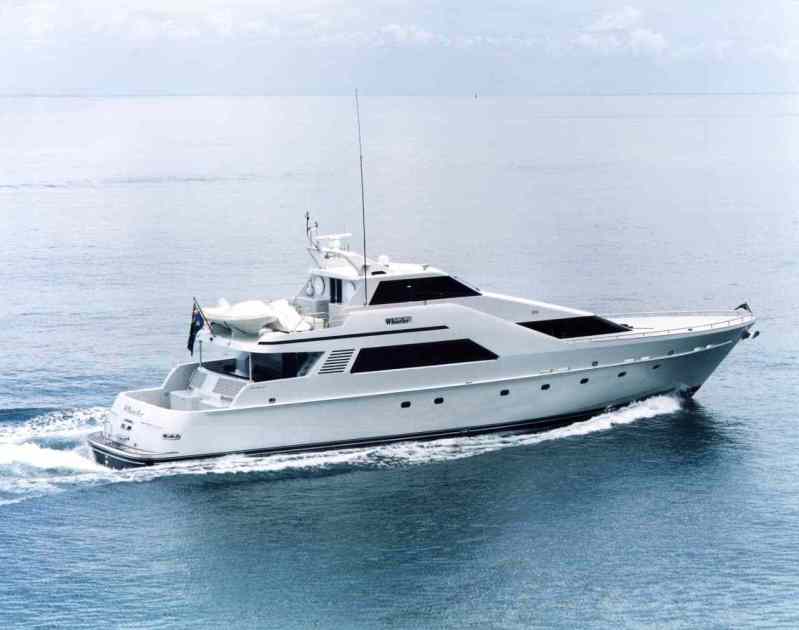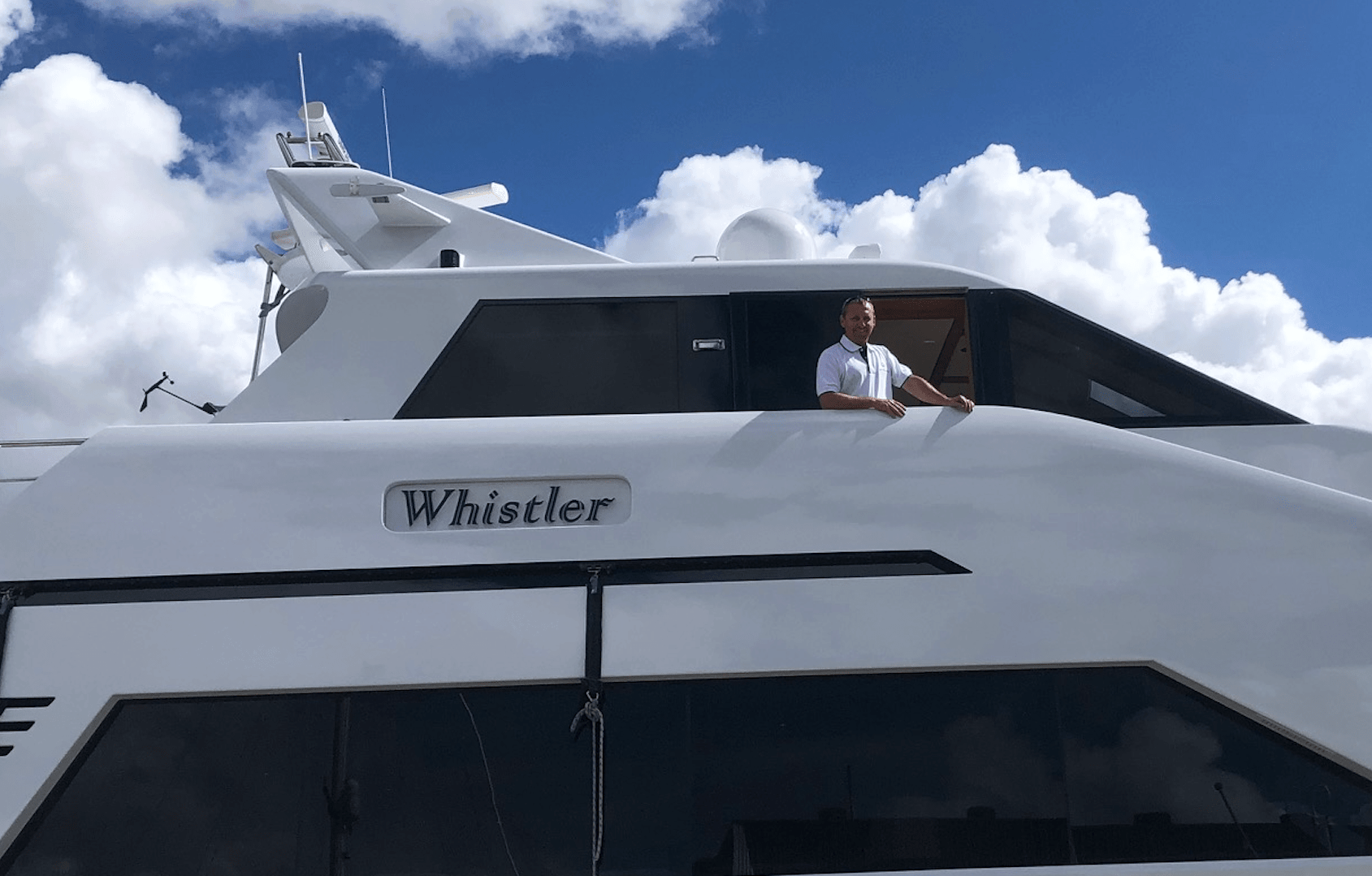Whistler holds a special place in the heart of just about everyone at NRW. From her initial design and build through to her annual maintenance, just about all of our employees have spent time on her over the years.
This article offers an interesting insight from 3 different perspectives. Bill Wright, who completed the original design, provides an interesting look at what was involved with Whistler’s original design and the detail Ian, Bill and their dad went to at the time. This is only part 1 of Bill’s full story on Whistler, we’ll publish part 2 in our next newsletter.
Our Naval Architect Adam Eprividou provides his insight into his unique experience with Whistler and you can tell from his tone that she really has had a long lasting impact on his career with NRW.
Whistler was recently in maintenance and technical upgrades so it also presented us with an opportunity to speak to her current Skipper Craig Hutchison, and get an insight from someone who has spent more time on Whistler than just about anyone else.
We hope you enjoy the collective thoughts from those who all played or play a part in the story of one of our finest recreational craft built to date.
https://www.wrightsons.com.au/whistler-4/
Bill Wright – Bringing Whistler To Life – Part One
In 1996 Ian Seargent asked NRW to design and cost a 105 foot superyacht for the Owner. We had been maintaining the Owner’s current boat since the late 1980’s and this particular vessel had some considerable problems that we were able to rectify over his period of ownership.
The design brief for the new boat was fairly simple: construction to be completed in either cold moulded timber or fibreglass composite, 4 staterooms and crew quarters, the ability to cross oceans with a minimum top speed of 26 knots and cruising speed of 22 knots.
This was a very exciting design brief but before we could cost the boat we would need to undertake a basic design including a hull and layout for approval. Dad was very excited about the project too and wanted to be involved in the design process, so we decided to create a hull design each. The layout that we had all decided on would fit into the respective hull designs.
Dad was 76 by this time and he decided to design his hull at home, while I completed my design in the office. We built Dad a long drawing desk for his home office, this was obviously pre CAD design technologies were available.
Prior to commencing our designs I completed a quick weight estimate so we were both designing to semi pre-determined criteria. After 2 weeks we had both completed our hand drawn lines plan, and we had agreed to use the same scale so we could simply overlay our designs. We overlaid our plans in the office one morning and were astonished at how similar our hull designs were. Dad’s design was a little bit finer in the bow with a higher spray chine while both designed with a round bilge forward developing to a chine aft. We compared our critical base numbers including LCB, LCF, prismatic and block co-efficient and they were almost identical, along with our more indepth design parameters.
Time was now getting tight for the provision of the build estimate, performance prediction and detailed layout plans for Ian Seargeant and the Owner’s review. My brother Ian priced the composite hull and a number of the fittings while Nigel (my great offsider) completed the detailed drawings of the layout and assisted me with the detailed weight estimate using either composite or timber, while we also priced the timber hull at the same time. It was a couple of very long weeks without many breaks.
At the same time we decided to produce 2 tank test models based off my design and Dad’s design. Long time employees Ian Wells and Percy Leong built each of the models. We decided to test both hull models at the Australian Maritime College in Launceston to determine which design had the least resistance when powered by the selected twin 1800hp Man diesel engines.
With the pricing, design layouts, and weight estimates complete, we now just had to provide the performance estimates of the vessel. This was going to be critical as we knew that the Owner would have the performance guaranteed by NRW in the contract if we were successful with the quote. To do this we knew we had to get the tank testing completed as soon as possible so the head of the AMC Tank Testing Facility, the brilliant Dr Martin Renilson, and his then offsider Gregor McFarlane found a four day test window for us.
Dad and I flew to Launceston with our 2 models as oversize luggage and on arrival to the airport the security asked “what’s in the coffins” and I said “Grandma”, everyone had a good laugh. We arrived at the tank testing facility the next morning, set up the models and started the testing. The models were attached to a self propelled gantry over the tank, 50 metres long by 2 metres wide. The gantry runs on rails like a railway train, with the maximum speed at that time of 4.5 metres per second. Each evening we would head back to our hotel and study the results over dinner. Thanks to Martin and Gregor, they worked very long hours over the four days to ensure we got the information we needed, we remain grateful to them to this day.
When we arrived back home Dad and I spent the whole weekend reviewing the results and they confirmed that hull 1 was the fastest while hull 2 used less horsepower at a cruising speed of 22 knots. We decided to proceed with hull 1 as it would be our safest option. I commenced the initial propeller design so that we could determine our propeller efficiency and once this was done I completed our projected speed at half load displacement of 85 tonnes. The calculated speed was 27.2 knots of which Dad, Ian and I were happy with. Ian completed the vessel weight for the composite hull using the structural data from High Modulus with the composite boat 2 tonnes lighter than the cold moulded timber version.
We were now ready to present to the Skipper Ian and the Owner so we arranged a meeting to present our quote, the layouts, detailed performance data and weight comparisons for the 2 different hull types. Two days later Ian and I arrived at the Owner’s office in Toowong and presented all of the information. At the end of the meeting the Owner looked at both Ian and I and said sorry it’s too expensive! We finished the meeting and although disappointed we agreed in the car on the way home that we couldn’t build the boat for any less as we weren’t prepared to go bankrupt by reducing the price. We agreed that we had 6-9 months of forward work at the time so we’d be okay.
Part 2 of the story of Whistler will appear in our next newsletter.
Whistler will always be the highlight of my career and I believe will become one of NRW’s classic boats of all time. – NRW Naval Architect Adam Eprividou Whistler
As a young Naval Architect, this was an amazing opportunity for me. One that I will always cherish and never forget.
I started at Wrights working on Restless. She is a 37′ picnic boat. This is the first boat that Bill and I had collaborated on, along with Nigel Rose. Prior to this boat, every boat had been designed by hand and lofted on the loft floor full size. The aim was to get the design systems in place so we could then design Whistler using CAD.
When I arrived in 1996, all that was available was a display model and 2D drafted layout plans. The hull had also been tank tested and selected. There was no CAD and only one PC (I think). This was mainly used for spreadsheeting and word processing. So we needed to equip the design office with suitable CAD programs. It was bringing the boat yard into the 21st century with regards to systems only as boat building practices were already there.
Bill’s guidance to me was that the finished boat needed to look exactly like the model. If you see the model and finished boat together, the end result was near identical.
We were very fortunate to have had the ability to work with the best consultants in all fields from around the world on this project. This put NRW in good stead for the future and where we are at today. Leaders in design and composite construction of all types of vessels.
Bill, Ron, Ian and Nigel had done a great job in all of the preliminary design and specification work. So there were no changes from the original concept. It was the first time we had utilised a computer to design the hull lines. Prior to this, all boats had been drawn by hand and then lofted out full-size. Overnight we had replaced this whole process and vital boat building space with one computer. It was quite daunting but successful.
The styling was definitely a departure from what NRW was known for. However it stayed true to the core values of being timeless. Today she is still a stylish vessel and could have been built only yesterday.
The things I loved most about Whistler was the way it brought the whole company from the design office to the boat builders up to date with the leading technology in the industry. We used the best of the best in all areas. When launched she would have been one of the most high-tech motor yachts on the planet.
The most daunting/stressful thing about the project was the contract speed we needed to meet. This was present every single day and we always had weight saving in mind with everything we did. The owner’s representative, Ian Sergeant, was also amazing to work with and gave us an incredible opportunity. I believe we exceeded both his and the owner’s expectations as the boat is still widely used today.
Whistler will always be the highlight of my career and I believe will become one of NRW’s classic boats of all time.
Craig Hutchinson QA – Whistler Skipper
On completion of her annual works Whistler’s long term Skipper Craig Hutchison provided us with a brief I sight into his experiences as the Skipper of this majestic motor yachts that means so much to all involved with her.
How long have you been involved with Whistler?
It will be 20 years this year and we’ve been to a lot of beautiful places on numerous occasions including The Whitsundays and North Queensland, The Kimberleys, around Tassie a few times, to NZ and Fiji.
What do you appreciate most about Whistler?
She is timeless but it’s the preparedness of the owners to invest in her upkeep that ensures those responsible treat her like their own. The owners have commited to her ongoing maintenance of the years which ensures she is in as new condition all the time. The staff and crew understand this and also reflect this in their involvement with the boat. The crew are very proud to work on such a stunning boat.
What recent works were completed on Whistler?
The main works completed included fairing of the hull and topsides and a respray, the replacement of the stabilisers to the Humphree Active Stabilisers, a range of general repairs and timber touch ups. Basically what we do each year to ensure she presents like she did from new.
Why do you bring Whistler back to Norman R Wrights each time?
She was built by the yard so makes sense to bring her back to the yard where she was built. But it’s not just that, the guys that work on her such as Dave, Kyle and Percy all either worked on her from new or know her so well. They are tradesmen of the highest standards, which means we get the highest quality job each and every time. Its really simple, Wrights just do a great job.
What makes Whistler a timeless classic?
Her lines are timeless and the commitment to her maintenance really ensures she looks as he did when she was built 20 years ago. The owners are invested in her maintaining her as new, the crew look after her like their own and bringing her back to Wrights means we get the best trades available working on her each time.



